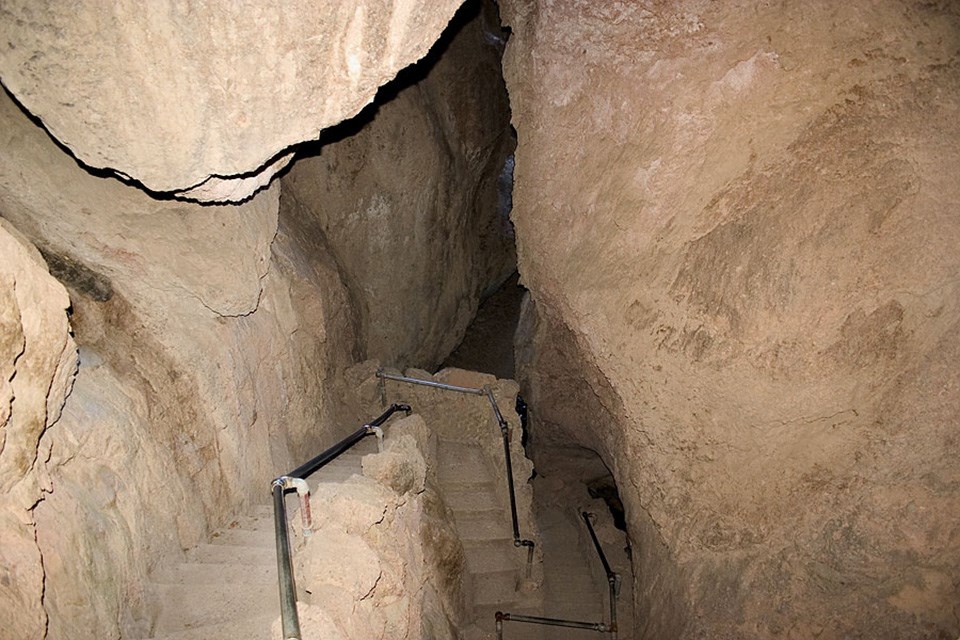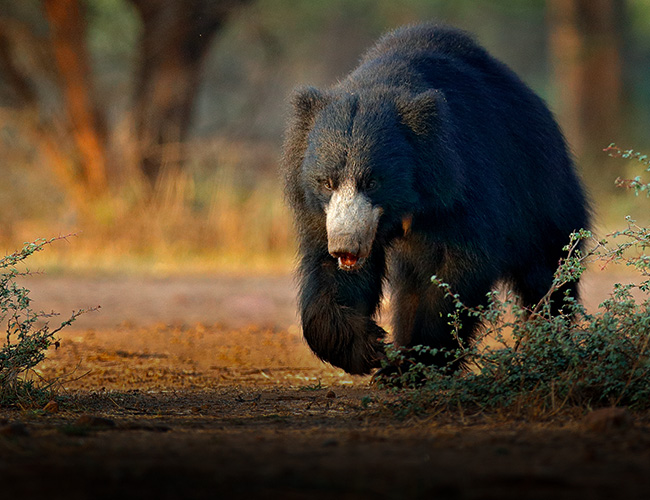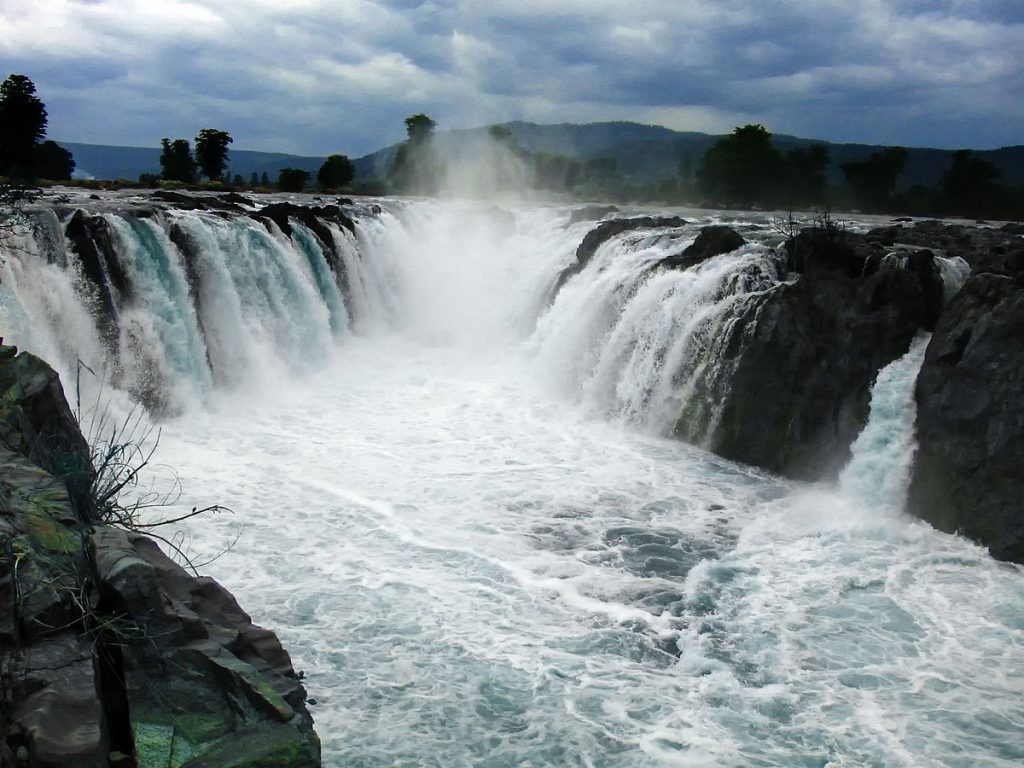Satpura National Park is a hidden gem in Madhya Pradesh, India. It’s a paradise for nature lovers and wildlife enthusiasts.
Spread over 1,400 square kilometers, the park offers a unique blend of landscapes. From rugged terrains to serene water bodies, Satpura National Park has it all. The park is rich in biodiversity, home to leopards, sloth bears, and many bird species.
Visitors can enjoy safaris, trekking, and even boat rides. Established in 1981, Satpura is named after the Satpura Range, which means “Seven Mountains. ” This park is less crowded compared to other Indian parks, providing a more intimate wildlife experience. If you seek adventure and tranquility, Satpura National Park is your perfect getaway.

Credit: www.naturesafariindia.com
Introduction To Satpura National Park
Satpura National Park is a hidden gem in the heart of India. It offers a unique blend of natural beauty, rich biodiversity, and historical significance. This blog post will introduce you to this magnificent park, covering its location, accessibility, and brief history. Whether you’re an avid wildlife enthusiast or someone looking to experience nature’s splendor, Satpura National Park has something to offer for everyone.
Location And Accessibility
Satpura National Park is located in the Hoshangabad district of Madhya Pradesh, India. Nestled in the Satpura Range, the park spans over 524 square kilometers. The nearest town is Pachmarhi, which is around 60 kilometers away and offers basic amenities for travelers.
Getting to Satpura National Park is relatively straightforward. The nearest airport is in Bhopal, about 200 kilometers away. From Bhopal, you can hire a taxi or take a bus to reach the park. The nearest railway station is Pipariya, just 55 kilometers from the park’s entrance. If you enjoy road trips, the scenic drive through the Satpura Range will leave you mesmerized.
Brief History
Established in 1981, Satpura National Park is part of the larger Pachmarhi Biosphere Reserve. Its name, “Satpura,” means “seven mountains,” a nod to the rugged terrain that defines this region. The park was set up to protect the diverse flora and fauna native to the area.
The park’s history dates back to the British colonial era. The British used Pachmarhi as a hill station, and the surrounding forests became a favorite hunting ground. Thankfully, conservation efforts have since transformed it into a sanctuary for wildlife. Today, the park is home to leopards, Indian bison, and even the elusive Bengal tiger.
Have you ever visited a place that instantly connects you to nature? Satpura National Park does just that. Its untouched landscapes and serene environment make it a must-visit destination for anyone who loves the great outdoors.
Why not plan your next trip to Satpura National Park? It’s more accessible than you might think, and its rich history makes it all the more intriguing. What are you waiting for? Pack your bags and get ready for an adventure of a lifetime!

Credit: www.tripadvisor.com
Flora In Satpura National Park
Exploring the lush landscapes of Satpura National Park is like stepping into a living botanical garden. The park’s diverse flora provides a feast for the senses, boasting everything from towering trees to delicate wildflowers. As you wander through this natural wonder, you’ll discover a variety of plant species and unique vegetation zones that contribute to the park’s rich biodiversity.
Diverse Plant Species
Satpura National Park is home to an impressive array of plant species, making it a haven for botany enthusiasts. The park’s flora includes a mix of teak, sal, and bamboo forests, interspersed with patches of grasslands and shrubs. One of the most striking aspects is the sheer variety of trees. You’ll find towering Teak and Sal trees, which dominate the landscape and provide essential habitats for wildlife.
As you hike through the park, you might come across the fragrant Mahua tree, known for its sweet-smelling flowers that attract numerous pollinators. The sight of Flame of the Forest trees, with their vibrant red flowers, is sure to capture your attention. These trees add a splash of color to the green canvas and play a crucial role in the ecosystem.
Have you ever marveled at the sight of wild orchids growing in their natural habitat? Satpura National Park offers just that. The park’s diverse plant life supports a variety of orchids, each with its unique charm. Discovering these delicate flowers nestled among the forest foliage can be a truly magical experience.
Unique Vegetation Zones
Satpura National Park’s vegetation is as varied as its topography, with different zones offering distinct plant communities. The park’s altitude ranges from 300 to 1,352 meters above sea level, creating diverse microclimates that support various types of vegetation.
In the lower altitudes, you’ll find dense deciduous forests, where trees shed their leaves in the dry season, creating a carpet of leaves that crunch underfoot. This zone is characterized by species like Teak and Saj, which thrive in the well-drained soil.
As you ascend, the vegetation changes to moist deciduous forests, where the trees are taller and the undergrowth is richer. Here, you can encounter species such as the Bija and Tendu trees. The higher altitudes host mixed forests, including patches of evergreen trees. These areas are lush and vibrant, with an abundance of ferns, mosses, and climbers that thrive in the cooler, moist conditions.
Have you considered how these unique vegetation zones impact the wildlife in Satpura National Park? Each zone provides a specific habitat for different species, ensuring a balanced and thriving ecosystem. The varied plant life supports a wide range of herbivores, which in turn attract predators, creating a dynamic and interconnected food web.
Next time you visit Satpura National Park, take a moment to appreciate the incredible flora that makes this place so special. What unexpected plant species will you discover on your adventure?
Fauna In Satpura National Park
Satpura National Park is a haven for wildlife enthusiasts. The park’s diverse terrain supports a wide range of animal species. This region in Madhya Pradesh is a treasure trove of fauna, making it a fascinating place for visitors. The park’s animals are its main attraction, drawing nature lovers from around the globe.
Mammals And Birds
The park is home to numerous mammals. Visitors may spot tigers, leopards, and wild boars. The Indian bison, also known as gaur, roams these lands freely. Langurs and rhesus monkeys add to the park’s charm. The park also hosts a variety of deer species, including the spotted deer and the sambar.
Birdwatchers will find Satpura National Park a paradise. The park boasts over 300 bird species. These include the Malabar pied hornbill and the crested serpent eagle. The Indian pitta and the paradise flycatcher are also common sights. Migratory birds add to the park’s rich avian diversity.
Endangered Species
Satpura National Park provides a sanctuary for several endangered species. The Indian giant squirrel is one of them. This large tree-dwelling rodent is a rare sight. The park also shelters the elusive Indian pangolin. These animals are often threatened by habitat loss and poaching.
Another significant resident is the sloth bear. These bears are vulnerable due to deforestation. The park’s efforts to protect these species are commendable. Conservation programs help ensure their survival. The presence of these animals highlights the park’s ecological importance.
Safari Experiences
Satpura National Park offers a variety of safari experiences. Each one allows visitors to explore its rich biodiversity in unique ways. Whether by jeep or boat, these safaris offer an intimate connection with nature.
Jeep Safaris
Jeep safaris are a thrilling way to see Satpura National Park. The open-top jeeps provide a great view of the landscape. Guides lead the way, sharing their knowledge about the park’s flora and fauna. You might spot tigers, leopards, and sloth bears. Birdwatchers can look forward to seeing many species of birds. The safari usually lasts for a few hours. It covers different parts of the park, offering diverse sights.
Boat Safaris
Boat safaris offer a serene experience. These safaris take place on the Denwa River. You can see animals coming to the water to drink. Crocodiles and various birds are common sightings. The calm waters reflect the beauty of the park. The boat moves slowly, allowing you to take in every detail. This quiet journey provides a peaceful escape from the hustle and bustle.
Trekking Adventures
Explore the thrilling trekking adventures at Satpura National Park. Discover diverse wildlife and stunning landscapes on exciting trails. Perfect for nature lovers and adventure seekers.
Satpura National Park, nestled in the heart of India, is a trekker’s paradise. With its vast landscapes, diverse flora and fauna, and serene environment, it offers a unique experience for adventure enthusiasts. Trekking through the park’s many trails not only gives you a chance to witness its natural beauty but also to immerse yourself in its rich biodiversity. ###Popular Trails
Satpura National Park boasts several popular trails that cater to different skill levels. One of the most recommended routes is the Pachmarhi to Dhoopgarh trek. This trail is not just about the destination but also the journey. The path takes you through dense forests, across rivulets, and up steep hills. Along the way, you might spot langurs, deer, and various bird species. Another notable trail is the Madhai to Churna trek. This route is relatively easier and perfect for beginners. The landscape is dotted with small water bodies and open grasslands, making it a photographer’s delight. Don’t forget to carry your camera! Have you ever tried night trekking? Satpura offers this unique experience on the Raatapani trail. Under the moonlight, the forest transforms into a mystical land, with nocturnal creatures adding to the charm. It’s an experience you shouldn’t miss. ###Guided Tours
While exploring on your own can be thrilling, guided tours provide an added layer of safety and insight. Knowledgeable guides lead these tours, ensuring you don’t miss out on key highlights. They share fascinating stories about the park’s history, its inhabitants, and the conservation efforts in place. Joining a guided tour also means you have someone to navigate the tricky parts of the trails. Guides are trained to spot wildlife and can help you identify different species of plants and animals. Their keen eyes and experience can greatly enhance your trekking adventure. Some tours even include camping experiences. Imagine setting up camp in the middle of the forest, cooking over an open fire, and listening to the sounds of nature as you fall asleep. It’s an adventure that will make your trip unforgettable. Ready for your next trekking adventure? Satpura National Park awaits with open arms and endless trails. Whether you’re a seasoned trekker or a newbie, there’s something here for everyone. So pack your bags, lace up your hiking boots, and get ready to explore the wild!Conservation Efforts
Satpura National Park’s conservation efforts protect diverse wildlife and unique ecosystems. Community initiatives and sustainable practices ensure long-term preservation.
Satpura National Park, located in the heart of India, is a haven for wildlife enthusiasts and nature lovers. The park’s rich biodiversity and scenic landscapes make it a unique destination. However, maintaining this delicate ecosystem requires dedicated conservation efforts. Let’s explore some of the key initiatives that help preserve this natural treasure.Anti-poaching Measures
The park’s administration has put significant efforts into combating poaching, which is a major threat to wildlife. Anti-poaching squads are constantly on patrol, ensuring that illegal activities are kept at bay. Modern technology plays a crucial role in these efforts. The use of drones and camera traps helps in monitoring vast areas, making it difficult for poachers to go unnoticed. Local communities are also involved in anti-poaching initiatives. Education and awareness programs have been conducted to inform villagers about the importance of wildlife conservation. By engaging the local population, the park has managed to create a network of vigilant citizens who report suspicious activities. Have you ever thought about how your visit to such parks can support these efforts? Every ticket you buy contributes to funding these crucial activities.Habitat Restoration
Restoring the natural habitat is another critical aspect of conservation at Satpura National Park. Efforts are focused on maintaining the natural vegetation and ensuring that the native species have a thriving environment. One practical step taken is the removal of invasive species. These plants and animals can disrupt the local ecosystem, making it hard for native species to survive. By removing them, the park ensures that the indigenous flora and fauna have a better chance of thriving. Reforestation programs are also in place. Visitors often participate in tree-planting activities, making it a community effort. Imagine planting a tree and knowing that it will provide shelter and food for countless species in the future. The park also focuses on water conservation. By constructing check dams and waterholes, they ensure that animals have access to water, especially during the dry seasons. What small steps can you take in your daily life to support habitat restoration? Simple actions like reducing waste and supporting sustainable products can make a big difference. Satpura National Park’s conservation efforts are a testament to what can be achieved when technology, community involvement, and dedicated management come together. Your visit and support help ensure that this beautiful sanctuary continues to thrive for generations to come.Visitor Information
Satpura National Park offers stunning landscapes and diverse wildlife. Visitors can enjoy guided safaris and nature walks. The park is a haven for adventure lovers and nature enthusiasts.
Visiting Satpura National Park is a thrilling experience that every nature lover should consider. Nestled in the heart of India, this park boasts diverse wildlife, captivating landscapes, and a rich cultural heritage. Whether you’re planning your first visit or returning for another adventure, knowing the best time to visit and where to stay can make your trip unforgettable.Best Time To Visit
The best time to visit Satpura National Park is between October and April. During these months, the weather is pleasant, and wildlife sightings are frequent. The park reopens in October after the monsoon season, with nature in full bloom. In March, I spotted a majestic tiger lounging by the Denwa River. The clear skies and warm temperatures made it an ideal time for photography and exploration. Visiting in the winter months, from December to February, offers a cooler climate, perfect for long safari rides. Morning safaris are especially rewarding, as animals are more active during the cooler hours.Accommodation Options
Satpura National Park offers a range of accommodation options to suit every budget and preference. Whether you prefer luxury lodges or budget-friendly stays, you’ll find something that fits your needs.- Luxury Lodges: For those looking to indulge, lodges like Reni Pani Jungle Lodge and Forsyth Lodge provide a luxurious experience with plush amenities, guided safaris, and gourmet dining. Imagine sipping coffee while watching the sunrise over the lush forest.
- Mid-Range Resorts: If you seek comfort without splurging, resorts like Denwa Backwater Escape and Madhai Riverside Lodge offer cozy rooms, beautiful views, and organized activities. Staying here feels like a perfect balance between adventure and relaxation.
- Budget-Friendly Options: For the budget-conscious traveler, there are several guesthouses and homestays in nearby towns like Sohagpur and Pachmarhi. These options provide basic amenities and a chance to experience local hospitality.

Credit: www.tigersafari.net
Local Culture And Communities
Satpura National Park showcases rich local culture and vibrant communities. Visitors can experience tribal traditions and unique handicrafts.
Satpura National Park is not just a haven for wildlife. It is also a vibrant tapestry of local culture and communities. The people living around the park enrich its landscape with their traditions and ways of life. They have coexisted with nature for generations. Their stories and customs add a unique charm to this protected area.Tribal Heritage
The park is home to several indigenous tribes. These tribes include the Gond and the Korku. Their history is deeply rooted in these forests. They have unique traditions and practices. Their art, music, and dance reflect their connection to nature. These tribes pass down their knowledge of the forest through generations.Community Involvement
Local communities play a vital role in conservation efforts. Many villagers work as guides and guards. They share their deep knowledge of the land with visitors. This involvement provides them with a livelihood. It also fosters a sense of ownership and pride in preserving the park. The collaboration between the park authorities and the locals is a model of sustainable conservation. “`Frequently Asked Questions
Why Is Satpura National Park Famous For?
Satpura National Park is famous for its diverse wildlife and scenic landscapes. Visitors often spot leopards, bison, and exotic birds.
How Many Tigers Are In Satpura Tiger Reserve?
The Satpura Tiger Reserve has approximately 50 tigers. This number can vary due to natural factors and conservation efforts.
Can We See Tiger In Satpura National Park?
Yes, you can see tigers in Satpura National Park. It offers a chance to spot these majestic animals in their natural habitat.
Are There Elephants In Satpura National Park?
Yes, Satpura National Park has elephants. They are one of the many wildlife species found in the park.
Conclusion
Satpura National Park offers a unique experience for nature lovers. The park’s rich biodiversity and stunning landscapes are truly captivating. Wildlife enthusiasts will enjoy spotting various animals in their natural habitat. Adventure seekers can explore the park’s trails and enjoy thrilling activities.
Satpura National Park promises an unforgettable journey through the heart of nature. Plan your visit soon and immerse yourself in its beauty and tranquility. This gem of Madhya Pradesh awaits you.
{ “@context”: “https://schema.org”, “@type”: “FAQPage”, “mainEntity”: [ { “@type”: “Question”, “name”: “Why is Satpura National Park famous for?”, “acceptedAnswer”: { “@type”: “Answer”, “text”: “Satpura National Park is famous for its diverse wildlife and scenic landscapes. Visitors often spot leopards, bison, and exotic birds.” } } , { “@type”: “Question”, “name”: “How many tigers are in Satpura Tiger Reserve?”, “acceptedAnswer”: { “@type”: “Answer”, “text”: “The Satpura Tiger Reserve has approximately 50 tigers. This number can vary due to natural factors and conservation efforts.” } } , { “@type”: “Question”, “name”: “Can we see tiger in Satpura National Park?”, “acceptedAnswer”: { “@type”: “Answer”, “text”: “Yes, you can see tigers in Satpura National Park. It offers a chance to spot these majestic animals in their natural habitat.” } } , { “@type”: “Question”, “name”: “Are there elephants in Satpura National Park?”, “acceptedAnswer”: { “@type”: “Answer”, “text”: “Yes, Satpura National Park has elephants. They are one of the many wildlife species found in the park.” } } ] }





